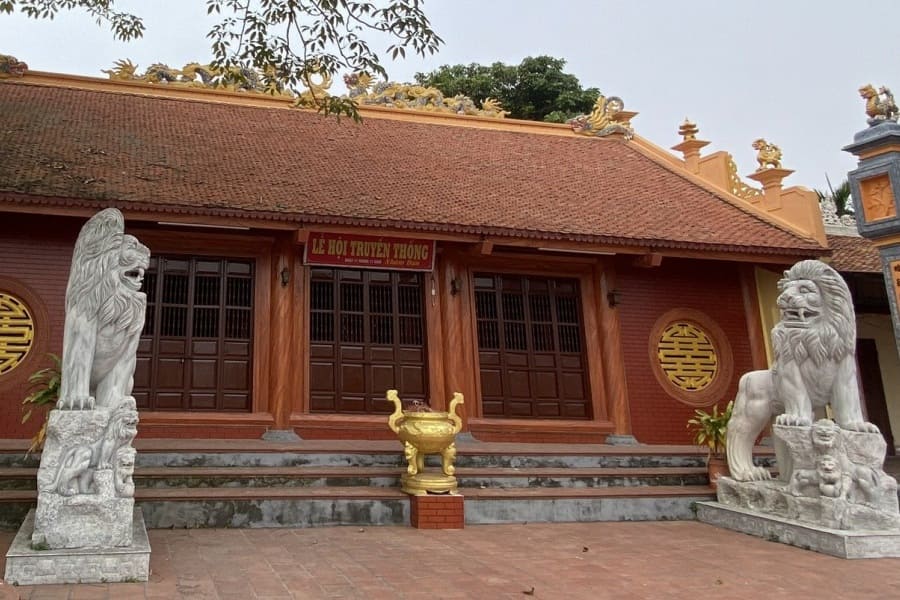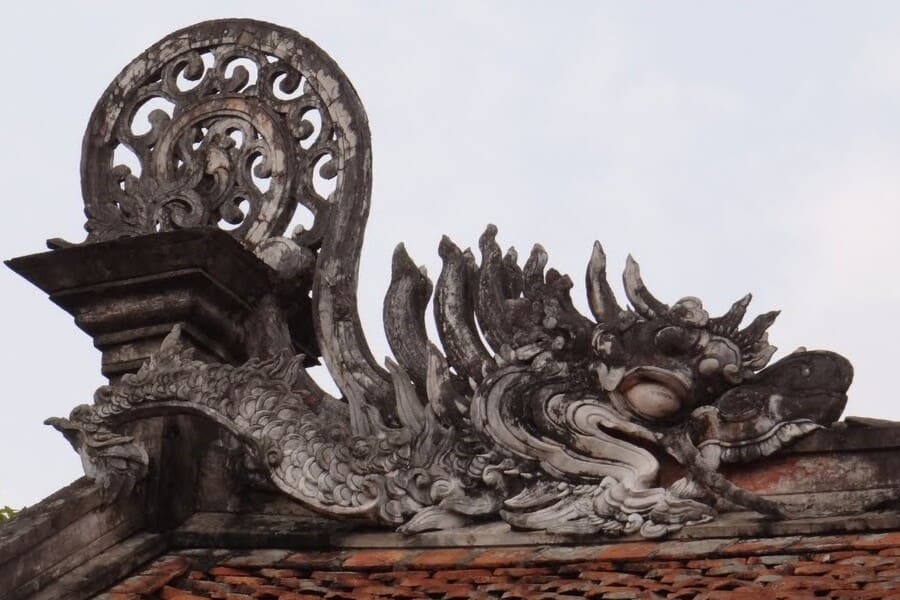Nestled in the tranquil outskirts of Hai Phong, Vietnam, Vinh Bao Cultural Village beckons with its rich tapestry of traditions and heritage. This charming village offers visitors a glimpse into authentic Vietnamese culture, where ancient customs, traditional architecture, and local craftsmanship converge. As a recommended stop on Vietnam shore excursions, from serene landscapes to vibrant community life, Vinh Bao Cultural Village promises an immersive experience steeped in history and rural charm, making it a hidden gem worth discovering in Northern Vietnam.
An Overview of Vinh Bao Cultural Village
Vinh Bao Cultural Village stands as a testament to the enduring traditions and cultural heritage of Hai Phong, Vietnam. Its serene surroundings, preserved architecture, and vibrant community life offer visitors a unique glimpse into authentic Vietnamese rural culture. Whether exploring ancient temples, learning traditional crafts, or participating in local festivities, a visit to Vinh Bao Cultural Village promises both enrichment and relaxation, making it a cherished destination for cultural enthusiasts and travelers seeking an immersive experience off the beaten path.
What to Expect at Vinh Bao Cultural Village?
Vinh Bao is a district rich in cultural traditions. It preserves numerous tangible and intangible cultural heritage items, creating a unique character for this sacred land. The district is home to hundreds of historical sites, including temples, shrines, pagodas, and communal houses, all reflecting the distinctive culture of the coastal inhabitants of the delta region.
Explore Historical sites in Vinh Bao Village
Ta Ngoai Temple
It is a city-level cultural and historical site, officially recognized in 2012. The temple worships two deities, descendants of King Hung Vuong the 18th, who were instrumental in defending the country against invaders.
Nguyen Binh Khiem Temple
The Temple dedicated to Trang Trinh Nguyen Binh Khiem, a national-level cultural and historical relic, attracts visitors to Vinh Bao who wish to explore the life and contributions of this cultural luminary of the nation.
An Lac Pagoda
The ancient An Lac Pagoda, built nearly 500 years ago, is adorned with hundreds of precious and rare ancient statues. Beyond its historical significance, An Lac Pagoda is also a revolutionary relic and a gathering place for the activities and meetings of the Vĩnh Bảo District Party Committee.
Dinh Muc Nhan
Visiting Dinh Nhan Muc in Nhan Hoa Commune, travelers are captivated by the pristine grandeur of the communal house, adorned with ancestral altars, ornate carvings, and ceremonial gateways. Highlighted are rare historical artifacts such as the 17th-century ceremonial sedan chair, 19th-century wooden altar, bronze statues of phoenixes, tortoises, and horses, as well as elaborate bronze lamps. Particularly noteworthy is the communal house’s collection of 31 royal decrees spanning dynasties, the oldest dating back 381 years to the reign of King Le Than Tong. A stone stele in front of the courtyard bears the inscription “Chinh Hoa year 15” – 1694, marking its historical importance.
Experience Traditional crafts in Vinh Bao Village
The Bao Ha Statue Carving Village
The traditional carving and lacquerware village of Bao Ha (Đong Minh Commune, Vinh Bao District) has long been considered the cradle of Vietnam’s statue carving craft. Visitors to this village can hear the story of Nguyen Cong Hue, the founder of the local statue carving tradition.
During the years of Ming occupation, Nguyen Cong Hue was taken to China to serve. During his time there, he diligently learned the crafts of carving, lacquerware, and acupuncture. Upon returning to his homeland, he taught these skills to the villagers. Grateful for his contributions, the people honored him as the founder of the statue carving craft and worship him at Bao Ha Temple.
Sedge Mat Weaving in Đong Minh
Produces traditional woven mats, a staple of Vietnamese craftsmanship.
Fish Fry Harvesting and Breeding in Hoi Am (Cao Minh)
Specializes in harvesting and breeding fish fry for aquaculture.
Learn about Festivals in Vinh Bao Village
Vinh Bao is home to many unique festivals and folk cultural activities that reflect the aesthetic sensibilities and talents of its rice-farming residents. Among these is the art of water puppetry in Nhan Hoa Commune, one of only 14 water puppet troupes in the country. The district also hosts a variety of cultural festivals, including temple and pagoda festivals, boat racing festivals, and traditional firework competitions. Each of these festivals leaves a profound and lasting impression, highlighting the rich cultural traditions of the people of Vinh Bao.
How to get to Vinh Bao Cultural Village?
From Hanoi to Hai Phong city
- By Car or Bus: From Hanoi, you can travel to Hai Phong by car or by taking a bus. The journey typically takes about 2 to 2.5 hours, depending on traffic conditions and the mode of transport chosen.
- By Train: Another option is to take a train from Hanoi to Hai Phong. Trains depart from Hanoi Railway Station (Ga Hanoi) and arrive at Hai Phong Railway Station (Ga Hai Phong). The train journey takes approximately 2.5 to 3 hours, providing a comfortable and scenic route to the city.
From Hai Phong city to Vinh Bao village
Vinh Bao District is located to the northwest of Hai Phong City. You can take a taxi, ride-share service, or a hired vehicle directly to the village. The journey typically takes around 30-40 minutes depending on traffic.
What to pack for a visit to Vinh Bao village?
When preparing for a visit to Vinh Bao village in Hai Phong shore excursions, consider packing light and comfortable clothing suitable for warm weather, as the region can be quite hot and humid. Here are some essential items to pack
- Lightweight Clothing: Opt for breathable fabrics such as cotton or linen to stay cool and comfortable during your visit.
- Comfortable Footwear: Choose sturdy and comfortable shoes suitable for walking on uneven terrain, as you may explore temples and historical sites in the village.
- Sun Protection: Pack sunscreen, sunglasses, and a wide-brimmed hat to shield yourself from the sun’s strong rays.
- Insect Repellent: Mosquitoes can be prevalent in rural areas, so bring insect repellent to protect yourself from bites.
Camera or Smartphone: Capture the picturesque scenery and cultural sights in Vinh Bao village with a camera or smartphone. - Respectful Attire: If you plan to visit temples or cultural sites, pack modest clothing that covers shoulders and knees as a sign of respect.
Vinh Bao Cultural Village in Hai Phong stands as a testament to the rich cultural heritage and historical significance of the region. With its traditional crafts, ancient temples, and vibrant festivals, the village offers visitors a glimpse into the deep-rooted traditions and customs of its people. Preserving valuable relics and stories passed down through generations, Vinh Bao Cultural Village remains a cherished destination where history comes alive, inviting all to explore and appreciate its unique cultural tapestry.







